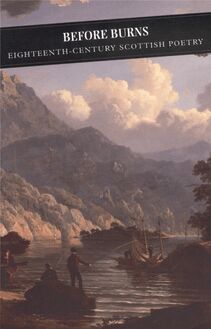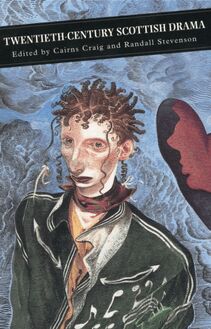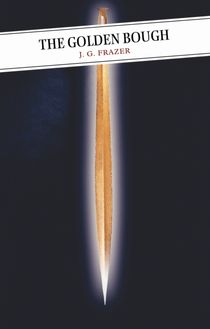-
 Univers
Univers
-
 Ebooks
Ebooks
-
 Livres audio
Livres audio
-
 Presse
Presse
-
 Podcasts
Podcasts
-
 BD
BD
-
 Documents
Documents
-
- Cours
- Révisions
- Ressources pédagogiques
- Sciences de l’éducation
- Manuels scolaires
- Langues
- Travaux de classe
- Annales de BEP
- Etudes supérieures
- Maternelle et primaire
- Fiches de lecture
- Orientation scolaire
- Méthodologie
- Corrigés de devoir
- Annales d’examens et concours
- Annales du bac
- Annales du brevet
- Rapports de stage
La lecture à portée de main
Vous pourrez modifier la taille du texte de cet ouvrage
Découvre YouScribe en t'inscrivant gratuitement
Je m'inscrisDécouvre YouScribe en t'inscrivant gratuitement
Je m'inscrisEn savoir plus
Vous pourrez modifier la taille du texte de cet ouvrage
En savoir plus

Description
Informations
| Publié par | Canongate Books |
| Date de parution | 01 juillet 2010 |
| Nombre de lectures | 0 |
| EAN13 | 9781847674579 |
| Langue | English |
Informations légales : prix de location à la page 0,0320€. Cette information est donnée uniquement à titre indicatif conformément à la législation en vigueur.
Extrait
Edited with an introduction by Dorothy McMillan
Copyright
First published in 1901
First published as a Canongate Classic in 1996, by Canongate Books Ltd, 14 High Street, Edinburgh, EH1 1TE
Reprinted in 1999 and 2005
This digital edition first published in 2009 by Canongate Books Ltd
canongate.co.uk
Foreword and editorial arrangement copyright © Dorothy McMillan, 2005 Introduction and editorial arrangement copyright © Dorothy Porter, 1985
All rights reserved
The publishers gratefully acknowledge general subsidy from the Scottish Arts Council towards the Canongate Classics series and a specific grant towards the publication of this title
British Library Cataloguing- in-Publication Data A catalogue record for this book is available on request from the British Library
ISBN 978 0 86241 549 5 eISBN 978 1 84767 457 9
Foreword: 1985–2005
I have added a couple of notes to the original Introduction, updated the Suggestions for Further Reading and Acknowledgements but otherwise I have decided to let well alone. Had I been preparing the edition now, the text would be as it is, the notes and other apparatus I would not wish to change, but no doubt the emphases of the Introduction would have been more firmly driven by questions about identity, gender, class and nation. But these matters are all discussed, if in a less polemic way than has become fashionable in the last 20 years, and I do not think that I would have come to radically different conclusions about the place of these issues in Brown’s life or in his great novel. Coming again to The House with the Green Shutters after these years, I am moved to stress that it is a great novel: it is indeed a modern classic. It has held its own on university courses in Scotland but it has not made its way into Scottish schools as firmly as I feel it should have done; nor has it yet achieved the wide readership outside Scotland that is its due. Brown’s novel perhaps still presents too bleak a picture for the nation to embrace or for those outside the country to encounter. And yet now as I read its closing lines I am struck by the perfect chastity of the language with which Brown affirms the unforgiving tragedy of a phase of Scottish life:
They gazed with blanched faces at the House with the Green Shutters, sitting dark there and terrible, beneath the radiant arch of the dawn.
In 1985 I wrote that the ‘arch is no gateway’ and I still think this is true. But this troubling refusal of comfort is a consequence of the honesty of Brown’s perception: if The House with the Green Shutters is not one of the twentieth century’s great novels then I do not know what is.
Dorothy McMillan Glasgow 2005
Contents
Foreword
Introduction
General Note on Topography and Chronology
Note on the Text
Suggestions for Further Reading
Acknowledgements
The House with the Green Shutters
Notes
Glossary
Introduction
George Douglas Brown died on 28 August 1902 in the home of his friend Andrew Melrose. He was thirty-three. In the following year a biography of Brown by Cuthbert Lennox, introduced by the Scottish man of letters, Andrew Lang, included a ‘Personal Reminiscence’ by Melrose. Lennox offers a happy enough picture of Brown’s childhood and adolescence on his father’s farm Drumsmudden, near Ochiltree, Ayrshire. ‘At Drumsmudden when school vacations permitted, George occupied a garret as a study … 1 Drumsmudden [his father] used to send George off to bed at ten o’clock; but in step with the sister who used to take him his candle and bid him an ostensible goodnight, he would return to the kitchen, where the young people would entertain each other in games of cards and long leisurely "cracks".’ 2 To educate George a two-year-old heifer was killed yearly: he got the proceeds. His father is later alleged to have said, ‘I’m not going to leave anything to George. I gave him a good education, and spent more on him than I shall be able to leave to each of the girls. I saw there was something in him; he carries the fortune I have given him. He’ll make a mark some day.’ 3
Can any of this be true? George Douglas Brown was born illegitimate to Sarah Gemmell, properly Sarah Gemmell Hare, an Irish farm labourer at Drumsmudden. 4 He never lived in his father’s house. And Andrew Melrose at least knew this; his own ‘Reminiscence’ contains Brown’s assertion that he revealed himself to Melrose more than to any other man he had ever known. Of course, the concealment of illegitimacy is understandable; Melrose later states it frankly in the biographical sketch in his 1923 Memorial Edition of The House with the Green Shutters . And who can say that Brown did not himself make up some stories about his early life? Caution is always proper with biography. It is especially so with Brown’s.
The standard biography of Brown is by James Veitch, published in 1952. 5 Veitch had access to papers apparently no longer available and to reminiscences of probably varying degrees of reliability: local gossip now confuses fact and fiction and may well have done so thirty-odd years ago. Some such gossip that I heard recently has led to surmise that, of merely minor interest, is best left unrecorded. In the absence of any better published source, I have drawn from Veitch freely but not complacently. Mere facts of place and time are secure enough; interpretations of belief and feeling, except where derived from letters and notebooks, must remain tentative.
He was born in a cottage in Ochiltree on 26 January 1869, for his mother had removed herself in anger from Drumsmudden after his father, George Douglas Brown, had been encouraged by his more socially conscious sister not to do the decent thing. From then until 1887, when he went to the University of Glasgow, he and his mother lived wherever she could find work to support them, always in the neighbourhood of Ochiltree, Coylton and Ayr; Cronberry outside Cumnock was their farthest and least pleasant place.
Brown’s education was necessarily broken and of inconsistent quality. Fortunately the dominie of Coylton School, the talented and committed John Smith, recognized Brown’s gifts and arranged for him to attend Ayr Academy at a reduced fee agreed by the rector, William Maybin. That Maybin thought highly of Brown is evident from the marks and comments on his school notebooks (now in the Carnegie Library, Ayr); that Brown thought highly of Maybin is clear from the dedication of The House with the Green Shutters : ‘To William Maybin’. His period at Ayr Academy may well have been the happiest and most secure of his life: he was doing well scholastically; his mother was proud of him, although beginning to ail; and he established his lifelong friendship with John Smith’s son, Tom.
Glasgow was a different matter. Bursaries and awards kept him from destitution but hardly offered comfort in a series of lodgings in tenements that he disliked. Not all his studies pleased him; he alternated between periods of depressed inertia and ferocious work. A friendship with the youthful Professor of Greek, Gilbert Murray, who took him to Castle Howard, his wife’s family’s seat, humanized this bleak period which, nevertheless, culminated in his graduation in 1890 as M.A. with First Class Honours in Classics. The Eglinton Classical Fellowship enabled him to return to Glasgow for a postgraduate year during which he won the important Snell Exhibition to Balliol College, Oxford.
Oxford and Brown never quite got on. He was enough of the dour Scotsman stereotype for a number of the students to shy away from him. Of course, he made friends: Montague Emanuel, David Maughan, William Menzies, Ernest Barker. The Emanuels’ home in London became a haven for him; the reminiscences of William Menzies, later an Inspector of Schools, and letters to Barker are important sources of biographical information. Older than the other undergraduates, he was also going over old ground for Moderations, the first part of the examination for Literae Humaniores . Yet he read other things, worked at the last like a demon, and a sensibly calculating one, taking a First in Mods in 1893.
Brown’s references to Oxford in his letters home tend to be sour. No joy of architecture or art seems to have disturbed his dislike of climate and ambience. But it was not merely misery and lack of academic conviction that brought him his Third in Greats in 1895. His mother, now always unwell, had been discharged from hospital, Brown rightly believed, to die. Despite his disenchantment with Academe it was undoubtedly his return to Ayrshire to nurse her which ruined his examination chances. His sacrifice for the mother to whom he was always exceptionally close was pure and cheerful. She died in May 1895.
Thus far Brown’s story is not quite a success story and so it continued. From Oxford he took himself to Grub Street, working as a publisher’s reader and freelance journalist, living a rather rootless, although not dull, life in lodgings in and around London. He refused the settled job proposed to him by Andrew Melrose (at £ 600 a year), desiring the freedom which would allow him to work towards the great novel he was convinced he could produce. It is possible to mistake the nature of freedom, if Melrose accurately reports the sum. It seems a very large amount.
He published in a number of literary magazines under a number of pseudonyms: an article on Burns in Blackwood’s Magazine ; some short stories, sketches and essays; a profile of Kruger serialized in, and, Brown complained, butchered by, the Morning Herald . Macqueen published in 1899 his romance of the Afridi War, Love and a Sword , under the pseudonym Kennedy King. Having the sole purpose of making money, it is quite good fun. Most of this work seems not to prepare one for the technical accomplishment of The House with the Green Shutters . ‘How Janet Goudie Came Home’, a short story pub
-
 Univers
Univers
-
 Ebooks
Ebooks
-
 Livres audio
Livres audio
-
 Presse
Presse
-
 Podcasts
Podcasts
-
 BD
BD
-
 Documents
Documents
-
Jeunesse
-
Littérature
-
Ressources professionnelles
-
Santé et bien-être
-
Savoirs
-
Education
-
Loisirs et hobbies
-
Art, musique et cinéma
-
Actualité et débat de société
-
Jeunesse
-
Littérature
-
Ressources professionnelles
-
Santé et bien-être
-
Savoirs
-
Education
-
Loisirs et hobbies
-
Art, musique et cinéma
-
Actualité et débat de société
-
Actualités
-
Lifestyle
-
Presse jeunesse
-
Presse professionnelle
-
Pratique
-
Presse sportive
-
Presse internationale
-
Culture & Médias
-
Action et Aventures
-
Science-fiction et Fantasy
-
Société
-
Jeunesse
-
Littérature
-
Ressources professionnelles
-
Santé et bien-être
-
Savoirs
-
Education
-
Loisirs et hobbies
-
Art, musique et cinéma
-
Actualité et débat de société
- Cours
- Révisions
- Ressources pédagogiques
- Sciences de l’éducation
- Manuels scolaires
- Langues
- Travaux de classe
- Annales de BEP
- Etudes supérieures
- Maternelle et primaire
- Fiches de lecture
- Orientation scolaire
- Méthodologie
- Corrigés de devoir
- Annales d’examens et concours
- Annales du bac
- Annales du brevet
- Rapports de stage















